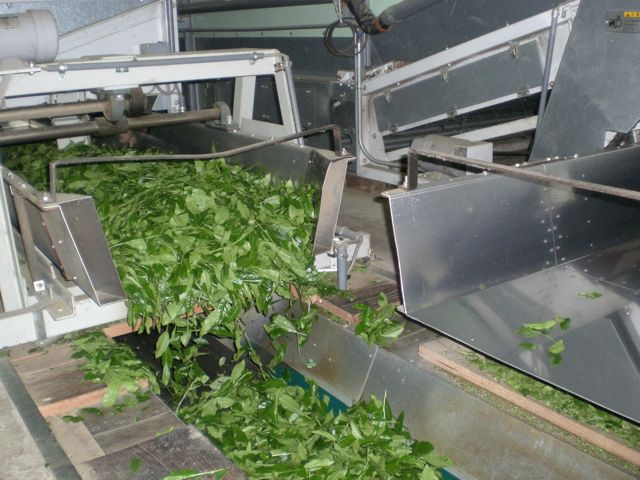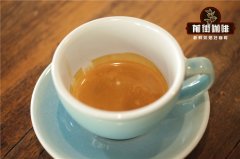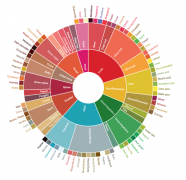The processing procedure of tea black tea and oolong tea go through different processes.
The processing of tea
As mentioned earlier, all real teas are made from the same leaves-differences in color, aroma and taste come from the way they are treated after harvest. Tea can be withered, dried, oxidized, fired and shaped according to the type of tea you want. For example, the leaves of green and white tea are not oxidized at all-the leaves are dried in the sun, fried or steamed in a pan, and then made into particles or twigs. Green tea can also be ground into matcha green tea powder.
On the other hand, strong teas such as oolong tea and black tea are produced through oxidation. At this stage, the leaves wither and curl to promote the reaction of enzymes in the leaves with oxygen. Compared with exquisite real tea such as green tea and white tea, this process makes the tea darker in color and more full-bodied in taste. The oxidation process includes two methods, the most common of which are the traditional method and the CTC method.
An orthodox method
For traditional methods, tea is treated in four steps, including withering, rolling, oxidation and drying. In the production process, each step helps to produce the flavor associated with dark real tea.
Withering
Tea is transported from the field to the tea factory within a few hours after picking and sorting. Leaves destined to turn black or oolong tea will wither to reduce moisture content so that the leaves can be rolled up without peeling off. The water content of harvested tea is usually very high, about 75%, but after rolling and oxidation, the water content will be reduced to about 45%. Place the leaves on a flat or bamboo tray to remove moisture. During the drying process, leaves stay in cool air for 8 to 18 hours.

Knead and roll
Once the leaves wither, they roll up to promote oxidation. In traditional production methods, leaves are rolled by hand, although in modern times, many manufacturers use coiling machines to speed up the process. When withered leaves are rolled up, the internal cellular structure is destroyed, releasing essential oils that react with oxygen to form a fragrance.
Oxidation
After the tea is rolled up, it goes through an oxidation process, also known as fermentation, which determines the strength and taste of the tea. The interaction between enzymes and oxygen breaks down chlorophyll and releases tannins, which darkens the leaves. The oxidation process is controlled by tea producers, who maintain a warm, humid environment.
The temperature is kept between 80 and 85 degrees Fahrenheit, and the length of the oxidation process leads to different types of real tea. As mentioned earlier, non-oxidizing teas, such as green and white teas, maintain green and botanical flavors. Semi-oxidized tea is a kind of tea that has only been oxidized for a short time, such as oolong tea, which is generally light brown or yellow and has a light taste. Fully oxidized tea, such as black tea, is reddish brown in color and strong in taste.
Drying
In order to prevent the oxidation process, the tea should be dried. According to tradition and the preferences of tea producers, tea can be dried in a pan, sun-dried or baked. Leaves are subjected to temperatures of more than 100 degrees Fahrenheit to stop the oxidation process and reduce water content to only 2-3%.
CTC method
The CTC production process is called extrusion-tear curling, and the result is the crushing of tea and granular particles. CTC tea goes through the same process of wilting, oxidation and drying as ordinary tea. The main difference between the traditional method and the CTC method occurs in the scrolling phase. In the CTC production process, the tea is rolled into a machine with hundreds or small sharp teeth. These spikes break down the tea into smaller fragments, which are usually used in tea bags.
Important Notice :
前街咖啡 FrontStreet Coffee has moved to new addredd:
FrontStreet Coffee Address: 315,Donghua East Road,GuangZhou
Tel:020 38364473
- Prev

What is the alcohol thickness (Body) of coffee? comparison of alcohol thickness between hand-brewed coffee and Italian coffee
The mellow thickness of coffee can be said to be the weight or fullness of the drink felt in the mouth. when the coffee is imported, we gently slide our tongue across the mouth, carefully feel the texture, analyze the smoothness, and then use the back of the tongue to measure the weight contained in it. it is as light as tea and thick as syrup, whether it has thickness and stickiness. Our description of this feeling may be light, or have a share.
- Next

Coffee taste description you should use coffee flavor wheel to identify flavor in this way
When we have a cup of hand-made coffee, the taste in the mouth is indescribable, just know that it is counted, or bitter, when it comes to other coffee beans, words are poor. So how to identify the flavor of coffee, in addition to drinking more coffee, the understanding and use of flavor wheel is the fastest way and shortcut. As everyone's feeling of flavor is quite subjective, they have not experienced
Related
- Beginners will see the "Coffee pull flower" guide!
- What is the difference between ice blog purified milk and ordinary milk coffee?
- Why is the Philippines the largest producer of crops in Liberia?
- For coffee extraction, should the fine powder be retained?
- How does extracted espresso fill pressed powder? How much strength does it take to press the powder?
- How to make jasmine cold extract coffee? Is the jasmine + latte good?
- Will this little toy really make the coffee taste better? How does Lily Drip affect coffee extraction?
- Will the action of slapping the filter cup also affect coffee extraction?
- What's the difference between powder-to-water ratio and powder-to-liquid ratio?
- What is the Ethiopian local species? What does it have to do with Heirloom native species?

